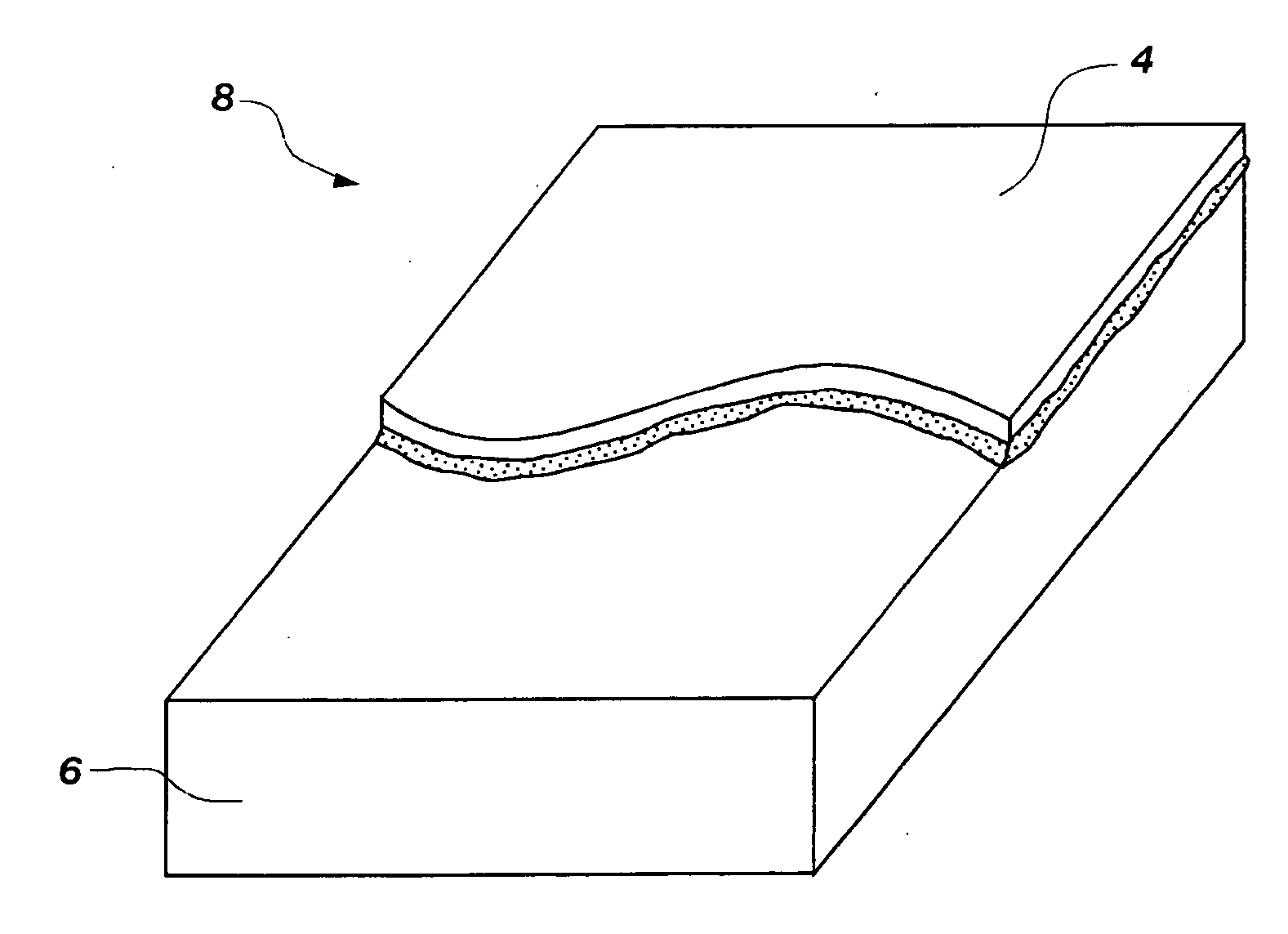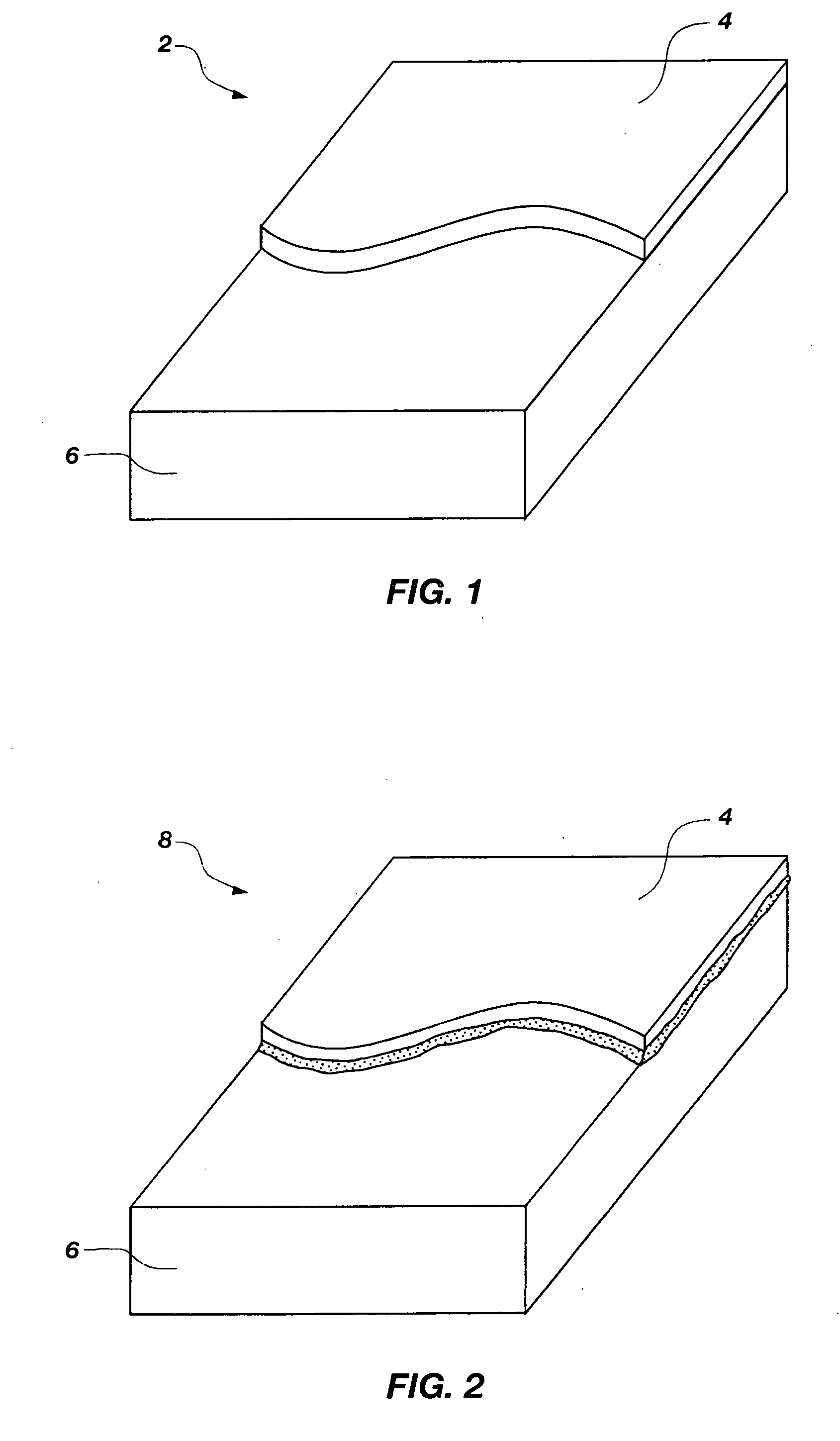Inert processing of oxide ceramic matrix composites and oxidation sensitive ceramic materials and intermediate structures and articles incorporating same
- Summary
- Abstract
- Description
- Claims
- Application Information
AI Technical Summary
Benefits of technology
Problems solved by technology
Method used
Image
Examples
example 1
Curing of a Laminate Formed from AS / N312HT-1
[0034] A prepreg formed from AS / N312HT-1 (available from COI Ceramics, Inc.) was laid-up to form a laminate. The prepreg was four square feet in size and was prepared from fresh slurry according to the manufacturer's directions. The laminate of the prepreg was cut into nine, 4″×4″ stacks. To cure the AS / N312HT-1 prepreg, the laminate was placed in an autoclave. Nitrogen was flowed into the autoclave at an inlet pressure of 10 psi and an inlet flow rate of 10 cubic feet per hour at standard conditions (“SCFH”). A pressure of approximately 60 PSI was applied to the autoclave. The temperature in the autoclave was ramped from approximately 75° C. to approximately 200° C. at a maximum of 0.04° C. / minute. The temperature was maintained at approximately 200° C. for approximately 12 hours to cure the laminate. The cured laminate was removed from the autoclave and allowed to cool to room temperature.
example 2
Firing of the Cured Laminate Using an Inert Firing Cycle
[0035] One of the pieces of the laminate (#1) was placed in an inert atmosphere furnace for firing. The inert atmosphere furnace was evacuated until the rate of pressure decrease slowed. When a pressure of 175 mTorr was achieved, the inert atmosphere furnace was purged with nitrogen. The evacuation and nitrogen purge were repeated. The temperature in the inert atmosphere furnace was increased to 982° C. The temperature was maintained for approximately 3 hours and then the temperature in the inert atmosphere furnace was decreased to approximately 200° C. After the inert atmosphere furnace automatically evacuated and purged twice, the laminate was cooled to room temperature in the inert atmosphere furnace.
example 3
Firing of the Cured Laminate Using a Modified Ambient / Inert Firing Cycle
[0036] One of the pieces of the laminate (#2) was placed in an ambient atmosphere furnace for firing. The temperature in the ambient atmosphere furnace was increased to approximately 475° C. The laminate was then placed in an inert atmosphere furnace, which was evacuated. When a pressure of 175 mTorr was achieved, the inert atmosphere furnace was purged with nitrogen. The evacuation and nitrogen purge were repeated. The temperature in the inert atmosphere furnace was increased to approximately 982° C. The temperature was maintained for approximately 3 hours and then the temperature in the inert atmosphere furnace was decreased to approximately 200° C. The laminate was removed from the inert atmosphere furnace and allowed to cool to room temperature.
PUM
| Property | Measurement | Unit |
|---|---|---|
| Temperature | aaaaa | aaaaa |
| Temperature | aaaaa | aaaaa |
| Temperature | aaaaa | aaaaa |
Abstract
Description
Claims
Application Information
 Login to View More
Login to View More - R&D
- Intellectual Property
- Life Sciences
- Materials
- Tech Scout
- Unparalleled Data Quality
- Higher Quality Content
- 60% Fewer Hallucinations
Browse by: Latest US Patents, China's latest patents, Technical Efficacy Thesaurus, Application Domain, Technology Topic, Popular Technical Reports.
© 2025 PatSnap. All rights reserved.Legal|Privacy policy|Modern Slavery Act Transparency Statement|Sitemap|About US| Contact US: help@patsnap.com



